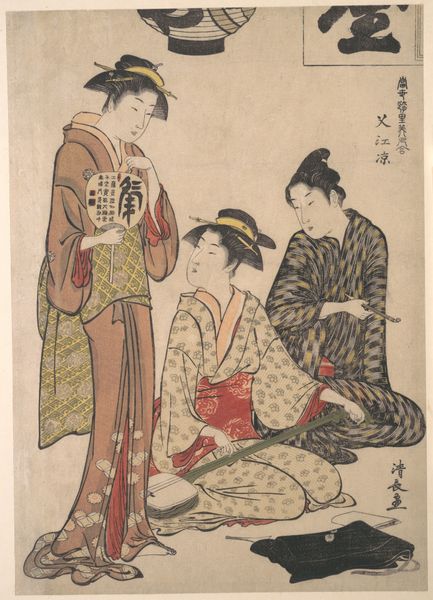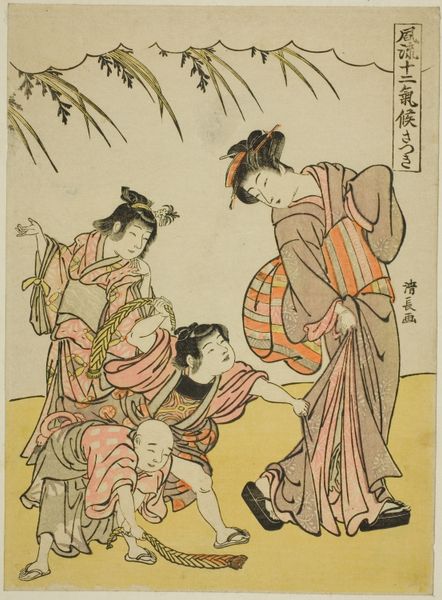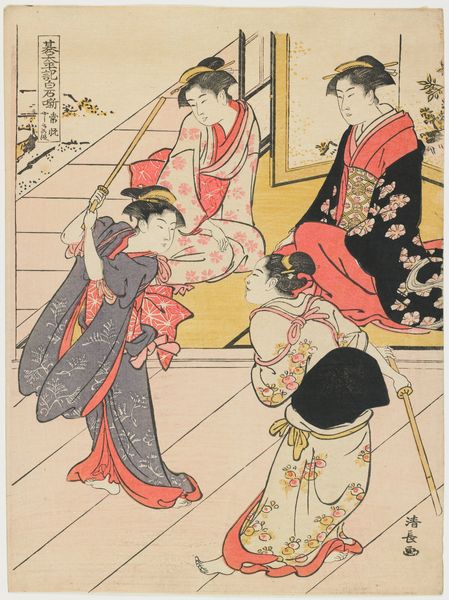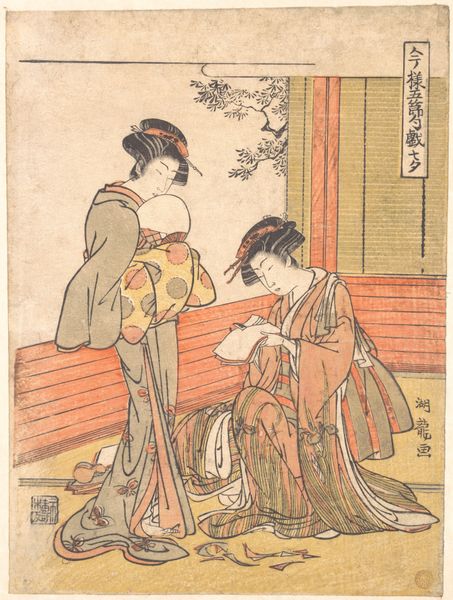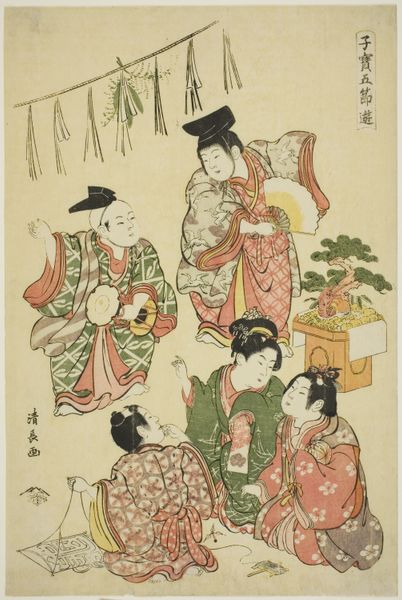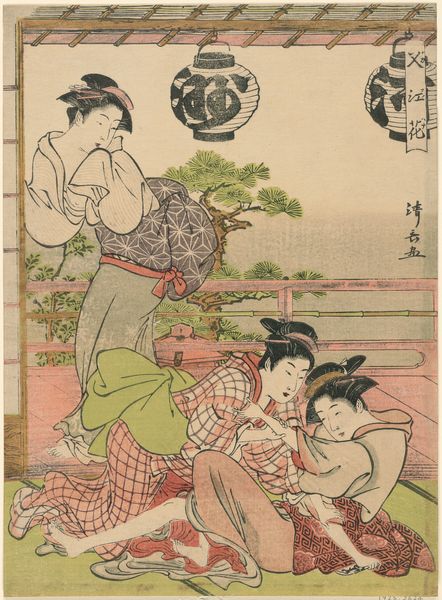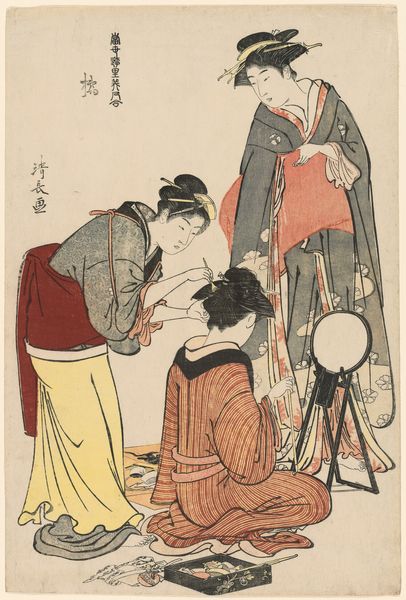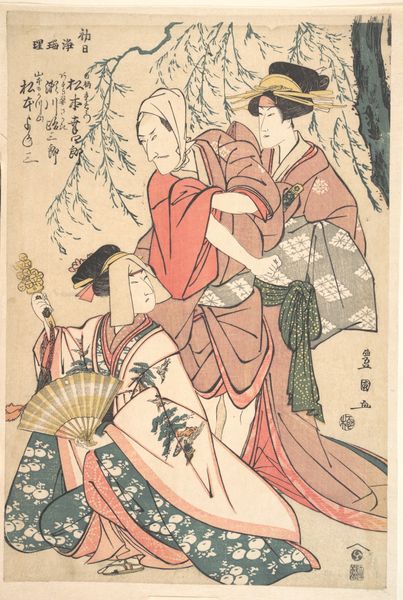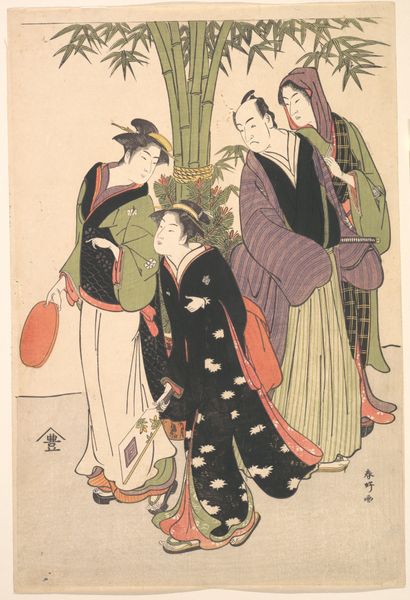
The Courtesan Nanakoshi of the Ōgiya Brothel, from the series “A Pat-tern Book of the Year’s First Designs, Fresh as Spring Herbs” (“Hinagata wakana no hatsu moyō”) 1777 - 1778
0:00
0:00
print, woodblock-print
#
portrait
# print
#
asian-art
#
ukiyo-e
#
figuration
#
woodblock-print
#
men
#
genre-painting
#
erotic-art
Dimensions: 15 1/4 x 10 1/2 in. (38.7 x 26.7 cm)
Copyright: Public Domain
Curator: At first glance, the woodblock print practically sings. There's such softness and attention to surface. Editor: Indeed. What we have here is "The Courtesan Nanakoshi of the Ōgiya Brothel, from the series “A Pattern Book of the Year’s First Designs, Fresh as Spring Herbs” by Isoda Koryūsai, created around 1777-1778. It gives us insight into the floating world of Edo-period Japan, where art was circulated as fashionable marketing materials in the sex and theatre industries. Curator: And Nanakoshi really captures the eye. Her careful application of makeup. What is she holding? A pipe or hairpin? The composition, while stylized, is still so immediate. The details and arrangement have so much symbolic intention. Editor: Yes, the visual motifs speak volumes. Consider the clock. It’s there as an allusion to the fleeting nature of time, and beauty, for a start. But even her placement on the page can tell us about her importance in the ecosystem of the time. Notice how she sits central and elevated within the page’s framing? Her pose exudes controlled femininity. Curator: Ukiyo-e prints like this were deeply entwined with the mercantile class. Mass production meant art was accessible to more people. What do we read from that, socially, considering Nanakoshi’s profession and public persona? Editor: They certainly served to legitimize those roles within society. Consider it a parallel to our own time; an ‘influencer’ being courted to represent various trends and attitudes in the wider culture. She’s a living embodiment of seasonal fashion—a way for consumers to access ephemeral ideas. Curator: I still wonder, beyond its context as a ‘pattern book’, whether these images empowered or commodified the women depicted. Did it give agency or reinforce established structures? It is open to interpretation, isn't it? Editor: That's the enduring power of these prints, I believe. The symbolism, while intricate, permits layers of understanding, reflective of an ever-shifting society. We find ourselves constantly re-evaluating not only our place in time but theirs.
Comments
No comments
Be the first to comment and join the conversation on the ultimate creative platform.
